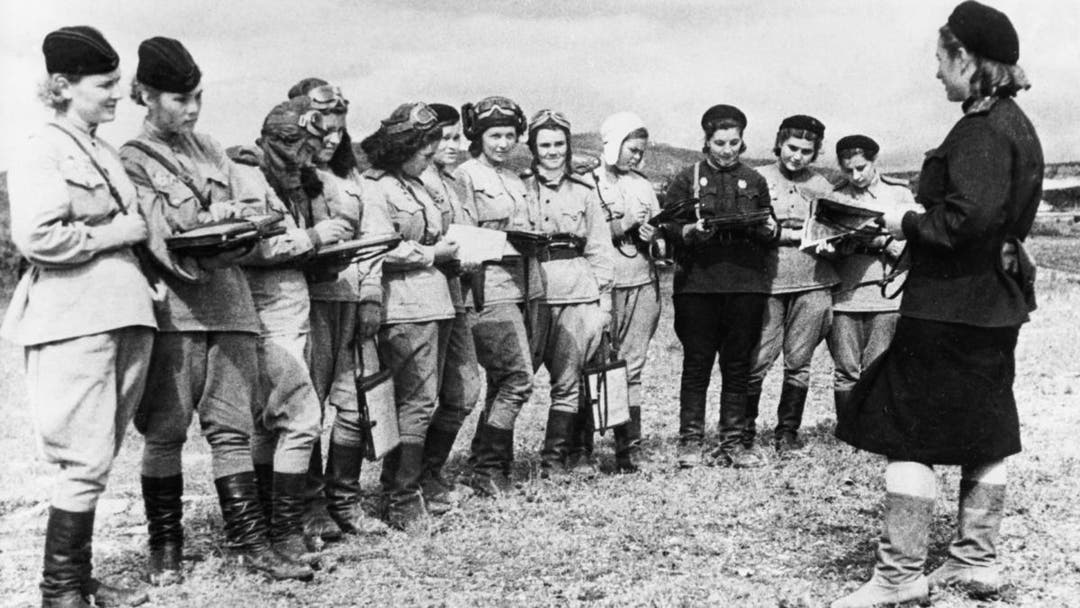Amazon Kindle/KDPAmazon KDP, formerly known as CreateSpace, is the most widely used print-on-demand service for self-publishing authors. It is relatively user-friendly and free to use. Books, both print and ebook, on KDP are easily accessible for most readers. Amazon KDP does, however, have a reputation for inconsistent print quality, especially for authors printing high-resolution illustrations and graphics. Cuts made during printing are sometimes off, though most of the time they are correct.
Apple iBooksApple iBooks is for ebooks only and is associated with younger readers. It has good distribution, as it can get your book in front of people around the world, however, keep in mind that Apple isn’t a bookstore. It’s a tech company. It’s not set up for book distribution.
Book BabyBookBaby is a print-on-demand service that offers cover design, formatting, editing, printing, global distribution, and multi-store publishing and ISBN acquisition.
Draft2DigitalDraft2Digital is a digital self-publishing platform that distributes ebooks only. It makes your ebook available on Apple iBooks, Barnes & Noble, and Kobo.
Google Play BooksWhile Amazon KDP is the biggest self-publishing platform in the U.S., it doesn’t have the reach that Google does. Google Play Books makes your books available on Android devices.
IngramSparkIngramSpark is Amazon’s enduring rival. IngramSpark also provides POD services in a wide variety of trim sizes as well as ebook services. The company is known for printing high-quality materials and has an extensive distribution network of brick-and-mortar stores. IngramSpark, however, can be quite difficult to navigate and its customer service is left wanting. The company’s ebook distribution service is not as vast as KDP’s. As of May 2023, authors can list both print and ebook titles for free and revise files for free until they approve of the eproof. Once that’s been approved, “revisions or resubmissions for completed print and ebook titles are subject to a $25 revision fee” (IngramSpark User Guide, Version 2.3, August 29, 2023, p. 10-11).
Kobo Writing LifeKobo focuses on the publishing and distribution of ebooks worldwide.
LuluLulu is a print-on-demand platform for self-publishing and global book distribution. It not only prints books, but other marketing materials such as calendars, journals, postcards, etc.
Distribution Services To Avoid
0 Comments
Bear with me here. We're going to take a small detour from the usual methodical explanations I provide to harp upon something.
My husband and I frequently get into disputes over our choice of parting words, especially when we’re traveling to the same location but by different means (i.e., in different cars). For example, recently, I took our son to gymnastics. My husband felt like getting out of the house and decided belatedly that he wanted to join us to watch our child’s physical antics. He arrived at the gym halfway through the scheduled practice. After practice concluded and we had packed up our cares and woes, he and I separated in the parking because we had come in a separate car. “See you in a while,” he called as we got into our cars to literally drive home, a no-longer-than-ten-minute trip. “But it’s not a while,” I argued over my shoulder. He shrugged and off he went. So, let’s break down time phrases because I need to vent my frustration to someone. “In a while” “In a while” implies that a significant chunk of time is going to pass before we once again meet. It could be an hour or it could be several. It could mean that you think it’s going to take much time to complete an activity, even if it doesn’t. For instance, “Hey, I’ll meet you back at the apartment in a while. Traffic is bad.” It should not be used when you’re going to see each other some ten minutes later! “In a few” Enter “In a few.” Now this is the appropriate farewell bidding should you intend to be reunited with someone in less than half an hour. Although “In a few” is the shortened form of “In a few minutes,” so long as your meeting is to take place within the next half hour, this is perfectly acceptable. “In a little while” Think of this phrase as the in-between of “In a while” and “In a few.” You’re not going to see someone immediately or even within the next half hour, but you most certainly will be talking to them before the afternoon. It’s more flexible. “In a minute” Only use this when you for sure are going to be seeing the person within the next five minutes. Perhaps you’re busy and you can’t quite get to a phone call at that immediate moment. “I’ll call you back in a minute.” Maybe you’re on your way to meet a friend for dinner and you text, “I’ll be there in a minute.” It’s not a literal minute. It’s approximately five minutes or less. All of this might sound pedantic, but because I am an editor, I can’t help but consider the contextual implications of these temporal phrases. Can you think of any others that friends or family misuse?  When an author approaches Emerging Ink Solutions and inquires after editing services, I usually walk them through the differences between copyediting, developmental editing, and substantive editing. More often than not, they require basic copyediting or developmental editing, depending on the state of their manuscript. Once we’ve agreed upon what needs to be done and a contract of services has been signed, the author submits their full manuscript. After I receive a raw manuscript from an author, the first thing I do is make a copy of it so I always have the original document for reference. Afterward, in the copy, I turn on the hidden characters feature to determine if I need to strip the document and place it in a fresh file to void any clumsy formatting the author has attempted. If the formatting isn’t too muddled, then I begin work by organizing the manuscript’s structure. I build the document from the ground-up by giving it an interior title page, a publication page, a dedication landing, and any other preliminaries, like an epigraph, quote, or a blank table of contents. I then begin assigning styles to headings and dividing chapters so I can easily search the document later. I give the book acknowledgments and about the author sections. If the book is a non-fiction work with citations and resources, then my work is doubled. For fiction books and books without citation work, I begin copyediting according to the author’s wishes. Sometimes I use Microsoft Word’s track changes, and sometimes I don’t. It’s completely dependent upon what the author is comfortable with. Because copyediting has become so second-nature to me, I copyedit as I read, correcting on the fly. If I must reread a sentence, then something’s wrong with it. I insert commas and proper punctuation, replace overused verbs and adjectives with alternatives, and help the author vary sentence syntax and structure to avoid repetition. If I’m doing a developmental edit, then I really focus on items in the first few chapters that could later come into question or be used in a more significant way. In all types of copyediting, I regularly utilize the comments function not only to make suggestions and ask questions of the author, but to teach if I see an author repeatedly making a mistake. I’m an editor now, but I was an ESL teacher for many years and feel compelled to help writers hone their writing and skills for possible future ventures.
opposite earlier in the book and drew that difference to the author’s attention. Being actively engaged in the content is vital to the efficacy of the editing process.
When working on non-fiction books that contain extensive citation work, I focus on the citations chapter-by-chapter. Humanities topics utilize Chicago Manual of Style while sciences like psychology, anthropology, and sociology call for APA. As I’m copyediting, I insert citations according to the required style and write out their corresponding bibliographic information. If It’s CMoS, I insert whole footnotes so we don’t have to produce a full-length bibliography at the end—unless the author expresses their desire for one. If I’m using APA, I create a separate document to write and organize the citations alphabetically. This makes it easier to search and reference should the author use the citation again in the future. After the initial copyediting round is complete, I send the manuscript off to the author for review. During this time, they go through all my changes and determine if they would like to accept or veto them. If I’ve used Microsoft Word’s track changes, this process is made simple as I can see what they’ve done. However, if an author has asked that I do raw editing, wherein I go in and touch their work without the use of track changes, then it’s more difficult for me to track what all they’ve completed during their review. Often, when I receive an author-reviewed manuscript, I must run a document comparison in MS word to figure out just how much they’ve touched. Some authors will simply accept all my edits, make minute adjustments, and then send it back for proofreading. Others will rewrite entire pages. Comparing documents helps me detect those new paragraphs so I can quickly copyedit them prior to moving on to proofreading. Once all is in order, I begin proofreading, rereading the entire manuscript to ensure we’ve properly cleaned up track changes’ residuals. I check for typos, review questions I asked of the author during copyediting, and look for general grammar errors. Before I begin the final round of proofreading, I use Grammarly to help catch any verb tense mistakes, inadvertent misspellings, or other items that might have made it past Microsoft’s automatic spell check. Grammarly cannot be used in place of an editor as it regularly offers incorrect suggestions for complex syntax. It offers inappropriate punctuation and has a hard time understanding turns of phrases. But the program effectively catches subject-verb disagreements and homophones. After the final proofread, I finalize the formatting of the manuscript. By now, I’ve already worked with the author to select a stylized font and have talked to them about their interior title page and publication information. I send a finalized PDF of the manuscript to the author so they can see what the interior of the book will look like once in print. It took me a long time to learn and grow comfortable with the process of copyediting a book. MS Word can be a tricky beast, but I’ve found that if I’m having issues with something, another editor somewhere else has been there before. Online communities for editors have been a lifesaver as I’ve asked them countless questions regarding indices, complex headers and footers, mysterious markings that have appeared in authors’ manuscripts, and advanced search and find methods. Copyediting takes hours upon hours of patience, dedication, and resolve. It requires an inquisitive but humble personality as the job is ever-evolving. Editors are continuing education students, constantly grasping for new materials to help them expand their understanding and skills in a burgeoning world of writing. Do you think you have what it takes to be an editor? This super real, not-made-up but humorous word is used to describe a phobia of long words. It is the second longest word in the English alphabet. So, how did this mouthful of a term come to ironically represent a phobia of long words? If you recall, the English language borrows roots, prefixes, and suffixes from an assortment of languages with Latin and Greek being the predominant lenders. With that in mind, let’s break down this colossal word and see if we can better understand what it means. Hippopotomonstrosesquipedaliophobia As you can guess, the first prefix--hippopoto—is borrowed from the animal hippopotamus which was the Latin name for “riverhorse” that first came about in the 1560s. In this case, however, because of the modernity of this phobia, the creator uses the name as a humorous prefix, fully embracing the ridiculous nature of the word and implying that the word is as large as the mammal. Hippopotomonstrosesquipedaliophobia Similarly, in an attempt to further stress out individuals suffering from the phobia, the creator adds yet another prefix--monstro—to imply that the continued length of the word is, in fact, monstrous. And, of course, phobia is a fear. In an exchange between etymology enthusiasts regarding the word, user Sven Yargs wrote, “I think it’s fair to say that Hippopotomonstrosesquipedaliophobia is an artificially long word, not a naturally long one—and therefore did not come into existence under the same rules of formation that govern most words in the English language.” Though the word is real and holds meaning, it is not usually used in seriousness. Online Etymology Dictionary. “Hippopotamus (n.).” Accessed October 2, 2023. https://www.etymonline.com/word/hippopotamus.
Yargs, Sven, “What is the story behind the word hippopotomonstrosesquipedaliophobia?” March 1, 2026 at 7:23. StackExchange. https://english.stackexchange.com/questions/1997/what-is-the-story-behind-the-word-hippopotomonstrosesquipedaliophobia.” Merriam-Webster.com Dictionary, s.v. “Sesquipedalian.” Accessed October 2, 2023. https://www.merriam-webster.com/dictionary/sesquipedhttps://www.merriam-webster.com/dictionary/sesquipedalianalian.
Can you think of any others? No where in the nursery rhyme does it say that Humpty Dumpty was an egg.
Think about it. Humpty Dumpty sat on a wall, Humpty Dumpty had a great fall; All the king’s horses and all the king’s men Couldn’t put Humpty together again. Humpty Dumpty’s fated tale first made an appearance in Juvenile Amusements by Samuel Arnold in 1797. Over the years, the rhyme, exhibiting minor variations to the lyrics, continued to turn up in books. Strangely enough, however, the term “humpty dumpty” did not begin with Mr. Arnold’s book. In fact, in the 1600s, it was the name given to brandy boiled with ale. In the 1700s, it was then used to describe a short and clumsy person. Although we don’t know for certain, it is possible the rhyme was meant to be a riddle. “The answer to the riddle, of course, is ‘an egg’—something that, if it rolled off a wall, could not be mended by any number of people” (Upton). Or perhaps it was Lewis Carroll’s Through the Looking Glass (1871) which described him as an egg that made gave poor Humpty such an appearance. But like many nursery rhymes which make fun of historical events, some believe the enigma that is Humpty Dumpty is representative of major historical happenings at the time of its writing. One theory is that Humpty Dumpty was, in fact, the name of a cannon stationed on the defending walls of the town of Colchester, which fell under siege in 1648 during the Second English Civil War. Humpty Dumpty the cannon eventually toppled off the wall and, of course, no one was able to put the cannon back together again due to its weight. But historians aren’t sure of this explanation’s validity because the Fall of Colchester occurred well over a century before the publication of Humpty Dumpty the rhyme. All other theories also remain speculative. Thus, the most plausible explanation of Humpty Dumpty’s identity is that his woeful tale was a riddle to be told to children. McAlpine, Dayna. “So… Humpty Dumpty Isn’t Actually an Egg?” HuffPost. 13 January 2023. https://www.huffingtonpost.co.uk/entry/humpty-dumpty-wasnt-an-egg_uk_63c13559e4b0b2e150705bb0#:~:text=Nowhere%20in%20the%20rhyme%20does,the%20more%20obvious%20it%20seems. Upton, Emily. “The Origin of Humpty Dumpty.” Today I Found Out. 24 April 2013. https://www.todayifoundout.com/index.php/2013/04/the-origin-of-humpty-dumpty/. The Night Witches. No, we’re not talking about whimsical costumes, glowing pumpkins, or All Hallow’s Eve. We’re not even talking about the Salem Witch Trials of the 17th century. The Night Witches was an all-female Soviet military bomber regiment that was active between 1942 and 1945 at the height of World War II. The 588th Night Bomber Regiment of the Soviet Air Forces was comprised entirely of young women, most of whom were volunteers between the ages of 17 and 26. The unit was the most highly decorated female unit in that force, flying thousands of missions over the years to lay waste to Nazi encampments, supplies, and soldiers. Unbeknownst to many, the Soviet Union was the first nation to allow women to fly combat missions. However, because the Soviets were already suffering mass casualties, the women of the 588th Night Bomber Regiment were not allotted standard military machines. Instead, they flew wood-and-canvas Polikarpov U-2 biplanes which were slow, obsolete, and offered no protection from the barrages of enemy fire directed at them. But leave it to the women to turn what used to be a crop-dusting plane into a subversive weapon of war! Although the regiment’s biplanes were wood-produced and could carry only two bombs at a time, they were exceptionally maneuverable. Because of their light weight, the planes could make sharper turns than their German counterparts. Their maximum speed was lower than the stall speeds of their enemies causing the biplanes to be overtaken and bypassed by opposing forces who were unable to slow down to target them.  Using wildly dangerous tactics, the women of the 588th would gain altitude, mark an objective, and then glide down in the still of the night. They maintained radio silence to avoid being detected by radio locators and their planes were too small to show up on radar or even infrared locators. The rushing whoosh their planes made upon approach frightened the Germans terribly as they could not see them or locate them on any map. This, coupled with the women’s deadly accuracy, earned them the name “Nachthexen,” which is German for Night Witch. The Night Witches was the most celebrated female unit of the Soviet Air Forces with 23 of its pilots garnering the prestigious title of “Hero of the Soviet Union.” Two of its members were named “Heroes of the Russian Federation and another was deemed “Hero of Kazakhstan.” The Night Witches were active through the end of WWII in 1945. Of the 261 women who served in the regiment, 32 died, although not all were in combat (tuberculosis was rampant at this time). Using literal paper airplanes, the 588th’s women dropped a total of 23,000 tons of bombs on the Nazis! The women who risked their lives in the name of their country were courageous but not without fear. They carried no parachutes not only because they flew so low to the ground but because they kept strict weight restrictions. They operated in the dark to avoid detection. Their cockpits were open to the elements – including the bitter Russian air – and their planes of paper presented them no protection. They wore men’s hand-me-down uniforms that were often in poor condition and offered no defense against the weather. They use no radar and no radio. In complete silence, they coordinated with their fellow pilots to carry out thousands of sorties. Perhaps there was something magical about them, after all. Garber, Megan. “Night Witches: The Female Fighter Pilots of World War II.” The Atlantic. 15 July 2013. Accessed 9 Sept. 2019. < https://www.theatlantic.com/technology/archive/2013/07/night-witches-the-female-fighter-pilots-of-world-war-ii/277779/> Holland, Brynn. “Meet the Night Witches, the Daring Female Pilots Who Bombed Nazis by Night.” History.com. June 7, 2019. Accessed 9 Sept. 2019. < https://www.history.com/news/meet-the-night-witches-the-daring-female-pilots-who-bombed-nazis-by-night> Rosenwald, Michael S. “Fierce, Feared, and Female: The WWII Pilots Known as the ‘Night Witches.’” The Washington Post. 1 March, 2019. Accessed 9 Sept. 2019. < https://www.washingtonpost.com/history/2019/03/01/fierce-feared-female-wwii-pilots-known-night-witches/?noredirect=on> Ruiz, Gisely. “The Night Witches: The All-Female World War II Squadron That Terrified the Nazis.” All That’s Interesting. 17 March 2019. Accessed 9 Sept. 2019. < https://allthatsinteresting.com/night-witches-ww2> Wikipedia Contrubutors. “Marina Raskova.” Wikipedia, The Free Encyclopedia. Accessed 9 Sept. 2019. < https://en.wikipedia.org/wiki/Marina_Raskova> Wikipedia Contributors. “Night Witches.” Wikipedia, The Free Encyclopedia. Accessed 9 Sept. 2019. < https://en.wikipedia.org/wiki/Night_Witches> Wikipedia Contrubutors. “Yevdokiya Bershanskaya.” Wikipedia, The Free Encyclopedia. Accessed 9 Sept. 2019. < https://en.wikipedia.org/wiki/Yevdokiya_Bershanskaya> ChatGPT, Midjourney, & Other AI-Content Creators: What Are Their Roles in Creative Writing?5/3/2023  For months, I’ve tracked ChatGPT and Midjourney’s development and what users have been able to create with the platforms. I am fascinated by their evolution and in their apparent exponential progress—especially since I’m a science-fiction author. But when it came to artificial intelligence affecting my company or editing in any capacity, I thought, “Eh, I’ve got time. It doesn’t really have anything to do with book editing. We’re good.” It remained on my periphery—until it plowed into me like (insert relevant sports metaphor here). Humanity’s proclivity for creative endeavors is what makes it unique. Our ability to elicit exquisite emotion from written word is arguably one of the most prominent attributes that makes humans, human. No other species on Earth has developed, evolved, and sustained a written language that can transcend time. Humans have used the written word to store information, make a permanent record of important events, and to communicate. Writing (among other talents) is what separates us from all other living beings. Creative writers—that is, people who write books (both fiction and non-fiction)—epitomize this skill. They have taken a learned talent that is universally taught and transformed it into a beautiful, non-replicable form of communication and storytelling. They have learned to describe in sweet detail the serenity of a sunny glade in a forest and to illustrate a gritty battle between long-time friends who have found themselves on opposing sides in a war; they have developed the ability to chronicle the physiological effects of anxiety and depression on the human body and to concisely explain how effective leadership can influence a business’ bottom line. Writers are writers because they fostered self-discipline and practiced their craft. The insertion of AI-created content into the creative realm is alarming, to say the least. I recently prompted ChatGPT to “write a love song,” and it did—poorly. But that doesn’t mean it won’t continue to evolve and better its responses. I asked the AI to write a short story about a navy pilot, and it did—poorly. To an untrained eye, the story seemed… okay. But for someone familiar with military protocol, ranks, and equipment, it was laughable. Still, it’s only going to get better. And that’s what’s so frightening. Aside from the implications of involving AI-created content in politics, diplomacy, and civil rights, the idea of ChatGPT and its descendants earning an active role in creative endeavors is offensive. Utilizing it to brainstorm, analyze, and synthesize is fine. I have nothing against interacting with it in that regard. However, asking it to write a story or to explain a complex subject in simpler terms (responsibilities belonging to an author) invalidates the years of hard work human writers have cultivated. As an author, I am personally against any type of AI-created content being used in a creative fashion. It goes against what a writer is, the embodiment of an inspired spirit. It’s the same with artists of all flavors. When we assign a computer a job that has, for all of humanity’s existence, belonged solely to humans and that has separated our species from others, we risk losing our identity. I know, I know—I sound like one of those sensationalized nay-sayers who adamantly declares that computers are taking over human jobs and that we should implement swift legal recourse to protect the human worker. No, let me clarify. As our technology advances and automation becomes readily available in every industry, we as a species will also evolve. But when it comes to creative endeavors and a constantly-learning computer attempting to replicate that which identifies us as human, artificial intelligence crosses a line. Already, hordes of people utilize ChatGPT to “write” low-effort books which they then publish on digital platforms like Amazon KDP—all to make a quick buck. We as a collective must establish a universal code that promotes human originality over the responses of an AI and that discourages the use of computers to generate “art” while not limiting the evolution of such technological advancements. I most certainly don’t have the answers, and you probably don’t either. This is an ever-changing and complex subject that requires research in a variety of fields to better assess the effects artificially intelligence platforms like ChatGPT, Midjourney, and Quillbot have on society and humanity’s identity. Even the most seasoned writers make mistakes. Whether you’re a technical writer, working on dialogue for your YA novel, or conducting research to supplement sources for your non-fiction book about World War II, keep in mind that everyone makes errors. Below is a list of mistakes that some authors might find surprising. The examples included are real-life instances that authors have submitted for editing.
1. Lazy Words Lazy words are words that weaken writing. They are usually generalizations inserted that can be deleted without altering the sentence’s purpose or emphasis. Do your best to avoid lazy words as there is always a better way to convey an idea. The following are considered lazy words: Get/got Go/went Actually About So Somehow Things/something Very Just Somewhat Then Stuff Really Almost Certainly, probably, basically Use descriptive adjectives or alternate words to best provide details to readers. For instance: Lawson outlines a very hopeful future for humanity and AI’s development. Lawson outlines a hopeful future for humanity and the development of AI technology. 2. There Was/There Were… Avoid using sentences that begin with “there was” or “there were” because it pins you (the author) into a corner. Once you implement that subject/verb phrase, you can’t be creative with the direction of the sentence. For example: There was a strike of lightning and there was a tremendous thundering sound… Instead, make the lightning and thunder the subjects. Write: A strike of lightning flickered, and a tremendous clap of thunder ensued. You give importance to the subjects by writing in this way! 3. The Past-Continuous Tense Many emerging writers overutilize the past-continuous tense. That is, someone was doing something. Past-continuous is defined as [was + a verb]. He was sitting; they were dancing; I was thinking… You can use this tense sparingly. In most cases, however, you create a more immediate sensation by using past simple. The colorful, blue door was standing open and inviting. The colorful, blue door stood open, inviting. By changing the verb tense, you create more immediacy. 4. Misdirects Another mistake writers often make has to do with misdirects. Allow me to provide an example: As I moved closer to check it out, it appeared to be a gold-encrusted sword. The first half of this sentence is a dependent clause. It can’t stand by itself because you’ve used the word “as.” It needs the second part of the sentence. In the dependent clause, you have established that I is the subject. Therefore, the rest of the sentence must be about I. Instead, the second part of the sentence (the independent clause: it appeared to be a small opening or window) uses the subject it. So, you’ve led your reader to believe that the sentence is about “I” in the beginning and then changed it in the second half. Rewrite the sentence to read: As I moved closer to check it out, I realize it was a gold-encrusted sword. Notice that “I” is the subject in both clauses. 5. Overuse of Coordinating Conjunctions and Prepositional Phrases Coordinating conjunctions “and” and “but” are important in the English language. However, when abused, they can become a great source of distress for readers. Often, writers write like they speak, tacking on independent clauses one after another by simply using “and.” Be careful when doing this because it can not only frustrate readers (because they can’t perceive an end to the sentence), but it can detract from the power of the statements you are making. For example: On the final day of our quantitative analysis class and in no less than six hours we had to prove what we had learned over the semester and do the following: review the data from a survey carried out and identify one- and two-tailed hypotheses as well as write level of measurement questions, recognize semantic differentials, and create an SPSS regression to represent the data, but no additional computer statistics needed to be completed, thank goodness. This is hard for readers because they don’t have an expectation of when the sentence will end. Instead, let’s change it to read: On the final day of our quantitative analysis class, we had to prove in no less than six hours what we had learned over the semester by reviewing the data from a survey, identifying one- and two-tailed hypotheses, writing level-of-measurement questions, recognizing semantic differentials, and creating an SPSS regression to represent the data. Thank goodness we weren’t asked to complete additional computer statistics! Overuse of prepositional phrases and dependent clauses can also frustrate readers. For example: She had an athletic build with short red hair that curled around her chin, wearing tight shorts and a tank top (red and gold decorative designs) with white and gold sneakers and no-show socks, like an Olympian, showing lean, muscular legs and a toned midriff. Aside from the misplaced modifiers, this sentence is exhausting to read. But if we edit it to focus on single elements one at a time, this character becomes a mosaic of an athlete! She had an athletic build with lean, muscular legs and a toned midriff. Her short, red hair curled around her chin. Her track uniform of tight-fitting shorts and a tank top was red and adorned with decorative gold designs. Her white sneakers also boasted gold. 6. Using the Same Word Twice On your quest to become a stronger writer, practice avoiding using the same word twice within a sentence or neighboring sentences. While she was used to the stares, she didn’t know the effect they would have on her. Using the chair to keep her balance, she gazed into the distance. She didn’t know what to do. While she was accustomed to the stares, she didn’t realize the effect they would have on her. Using her chair to keep her balance, she gazed into the distance. What could she do? Young or fledgling authors have a proclivity for reusing words because they just want to get the information down on the page. They are not yet aware of their surroundings (the surrounding sentences). 7. Distractions Many authors write like they speak and hope that punctuation will clarify everything. But you can’t do that. Writers must find a balance between how they speak and the written language. Often, this is the copyeditor’s job! Writers can become distracted by their own inner thoughts and subsequently divert readers’ attention from the focus of a sentence. For instance: Having a group of volunteers from different backgrounds: from teenagers, busy moms, and octogenarians to college students and retirees trying to stay active and involved leant itself to scheduling complications to say the least. That’s a meandering sentence that will frustrate readers. Rewrite it to read: The volunteers came from a variety of backgrounds. Some were teenagers while others were busy mothers and octogenarians. College students and retirees trying to stay active also participated. Of course, such a wide assortment of volunteers led to scheduling complications. See? A little cleaner, a little more straightforward. Writers are proud people who are intimately tied to their creative works. Manuscripts—no matter if they’re fiction or non-fiction—act as representations of an author’s identity and soul. They symbolize hard work, dedication, and perseverance. Aside from the day-to-day common typos and generalized writing mistakes others might tout, the above list delves into the nitty gritty of developmental editing. Don’t be discouraged if you make the above-mentioned mistakes! Now, you know what to look out for. Make your corrections and go forth! I can’t tell you how many times I’ve shared with people that I’m an author/editor and they’ve responded with, “Oh! I’ve always wanted to write a book!” or “I’ve been thinking about writing a book!” or “I started to write a book a few years ago but never finished it…” As they enthusiastically launch into how they were writing a memoir, I simply present a polite smile and nod. Not because I’m uninterested or am a mean-spirited person, mind you. But because such responses are nearly constant. It’s become a running joke between myself and my husband.
The best advice I can impart wannabe writers is this: develop self-discipline. Sit down and write. Force yourself to write. Every day. Set a schedule, make it a part of your routine, and do it. Don’t make excuses. Self-discipline separates writers from wannabe authors. It was American Robert Greene who said, “Mastery is not a function of genius or talent; it is a function of time and intense focus applied to a particular field or knowledge.” Just like anything else in life, if you want to be good at something, you must practice it. Even if you’ve had a stressful day or are exhausted, if it is your desire to be an accomplished author, open that MS Word document and write! Even when I’m exhausted from a day’s activities, I open my work in progress. My mind might be unable to produce content at that moment, but I can most definitely reread what I’ve written, edit, and place myself in that creative mindset. Don’t talk yourself out of it! I also recommend that you read, read, read! How can you write if you do not like to read? How can you connect with readers if you don’t continuously explore how others do it? Expose yourself to a variety of genres and take note of how authors convey information. If you passionately read YA fiction, delve into a memoir. If you usually select mystery-thrillers, pick up a steamy romance novel or a historical fiction book. The more you expose yourself to the incredibly vast world of writing, the deeper your well of experience and comprehension grows. It's just that simple—and difficult. |
Kara WilsonOwner/Editor of Emerging Ink Solutions, avid YA/NA author, adamant supporter of the Oxford Comma, anime and music enthusiast. Archives
February 2024
|



 RSS Feed
RSS Feed
